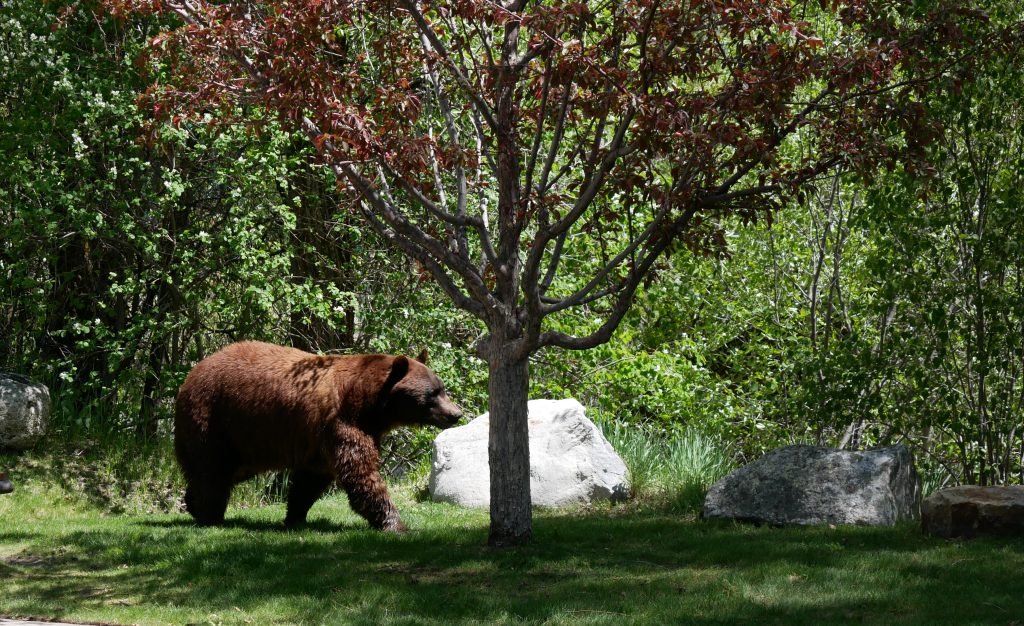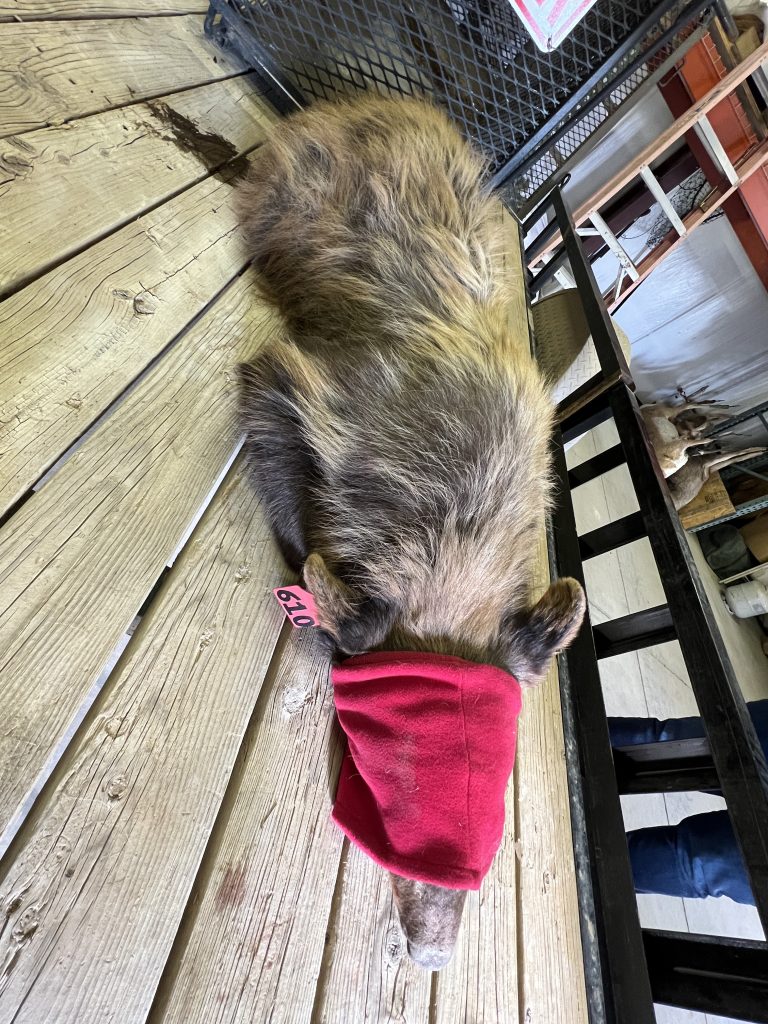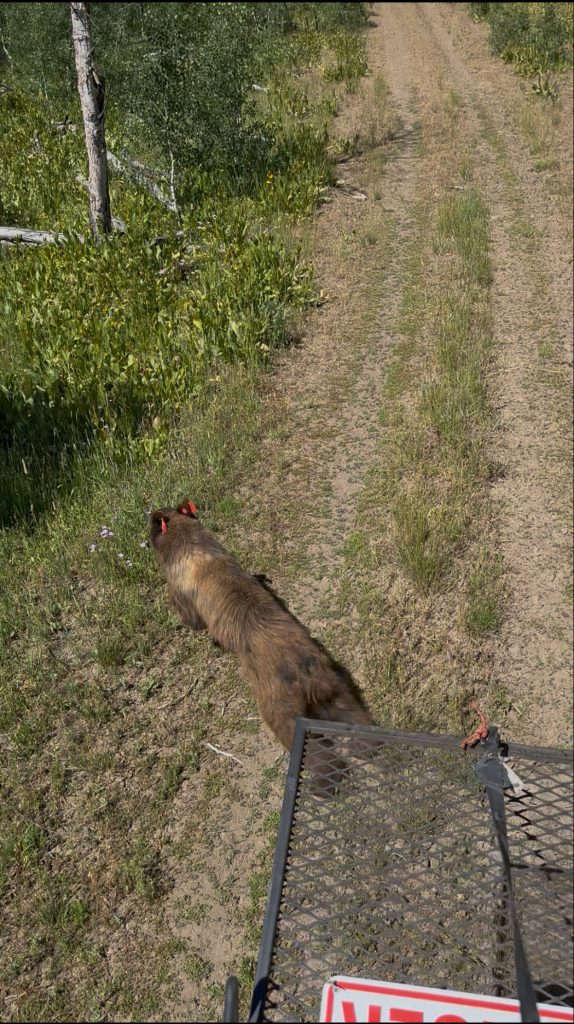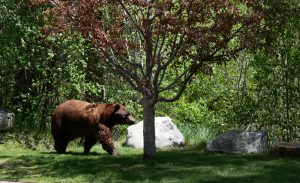Drought conditions drive bears to lower elevations, residential areas

As dry conditions continue across Northwest Colorado, Colorado Parks and Wildlife officials say bear and mountain lion sightings at lower elevations, including residential areas, may continue until berries and nuts fall and drought conditions improve.
According to CPW Assistant Area Wildlife Manager Mike Swaro, vegetation across the region dried out quickly this summer, especially in mid-elevations where bears typically forage after hibernation.
“Having 90-degree temps with consistent high winds has cured a lot of that vegetation earlier and quicker than usual,” Swaro said. “It seems like we have a gap this year because everything dried out so quickly.”
Bears, which rely on a mix of grasses, nuts, berries and animal protein, are finding fewer options as food and water sources grow scarcer due to the drought. While some fall food like acorns, chokecherries and serviceberries are beginning to ripen, the dry early- and mid-summer period left a nutrition void that Swaro believes contributed to a rise in bear sightings at lower elevations, including within the city of Craig.
“They drink a lot when they’re eating a lot to get those fat reserves in store,” he said. “When a lot of water sources dry up, they’re going to typically have to go higher or lower to find water in the creek bottoms or up in higher elevations.”
Other wildlife, including mountain lions, are also being seen more often in areas closer to Craig and within the city limits.
However, Swaro noted that one component of the increased sightings of both mountain lions and bears is the growing use of trail cameras and home security systems.
“I think we see or hear about more mountain lions recently because many people have some type of camera,” he said. “But, I don’t think it’s uncommon for a lion to utilize this country or the edges of town as well.”
Deer populations in Craig, which fluctuate based on hunting pressure and environmental factors, may also be drawing in mountain lions seeking an easy meal. Swaro encouraged pet owners to keep animals indoors at night when possible, as lions have been known to prey on cats and dogs.
Earlier this summer, CPW captured and relocated a juvenile female bear that had been spotted repeatedly across Craig, primarily on the city’s north and east sides and along the Yampa River. The same bear, which was easy to identify due to its light blonde coat and chocolate-colored legs and face, was first seen several miles north of town as it moved south along Fortification Creek.

“We had some problems with it getting into a few different hummingbird feeders, barbecue grills, outside food sources and trash that was left outside,” Swaro said. “In Craig, we typically don’t have many bear issues, so people aren’t as cognizant of trash and outside attractants as they are in Steamboat.”
Despite efforts to educate residents and clean up attractants, the bear continued returning to neighborhoods in search of garbage, which prompted CPW to trap and relocate it.
“She was a young one- or two-year-old juvenile female bear we trapped,” Swaro said. “From a safety standpoint, CPW made the decision to relocate that bear.”
Relocation sites are carefully chosen based on available habitat, food sources and distance from residential areas. Bears are tagged and microchipped before release. However, repeated conflicts after relocation can limit CPW’s options.
“If that bear were to continue to get into trouble and it’s been trapped already, then we’re very limited on what we can do with it,” Swaro said.

While relocation is a last resort, CPW has several hazing strategies to discourage bears from approaching homes. Officers use rubber buckshot, bean bags and noise-making devices to condition bears to avoid humans. In some cases, trained dogs may also be used.
Still, these methods are only part of the solution.
“Even with hazing, unless those attractants are removed, a bear might continue to return to an area,” Swaro said. “A bunch of trash with leftover fat or grease or food scraps is all high-caloric food that can increase that calorie load and increase that fat to get them through winter.”
Swaro emphasized the importance of residents doing their part to keep wildlife wild. That includes removing outside attractants like trash, birdseed and pet food and reporting bear sightings directly to CPW..
“If you do see a bear in the area, just call CPW and let them be aware of it,” he said. “We can do some proactive things in the neighborhood and spread the word with folks.”
Though Craig is less prone to bear activity than Steamboat Springs, thanks in part to a natural buffer of open space, Swaro said CPW may increase educational outreach if encounters continue.
“We just have a buffer where we don’t have that prime bear habitat that backs right up to Craig like the Steamboat area does,” he said. “But with time, if we do see more bears, there might be an opportunity to ramp up education a little bit more.”
As fall forage ripens and falls to the ground, CPW hopes to see bears return to more natural feeding patterns at higher elevations.
Swaro emphasized the importance of residents doing their part to keep wildlife wild. That includes removing outside attractants like trash, birdseed and pet food and reporting bear sightings directly to CPW.

Support Local Journalism

Support Local Journalism
Readers around Craig and Moffat County make the Craig Press’ work possible. Your financial contribution supports our efforts to deliver quality, locally relevant journalism.
Now more than ever, your support is critical to help us keep our community informed about the evolving coronavirus pandemic and the impact it is having locally. Every contribution, however large or small, will make a difference.
Each donation will be used exclusively for the development and creation of increased news coverage.





